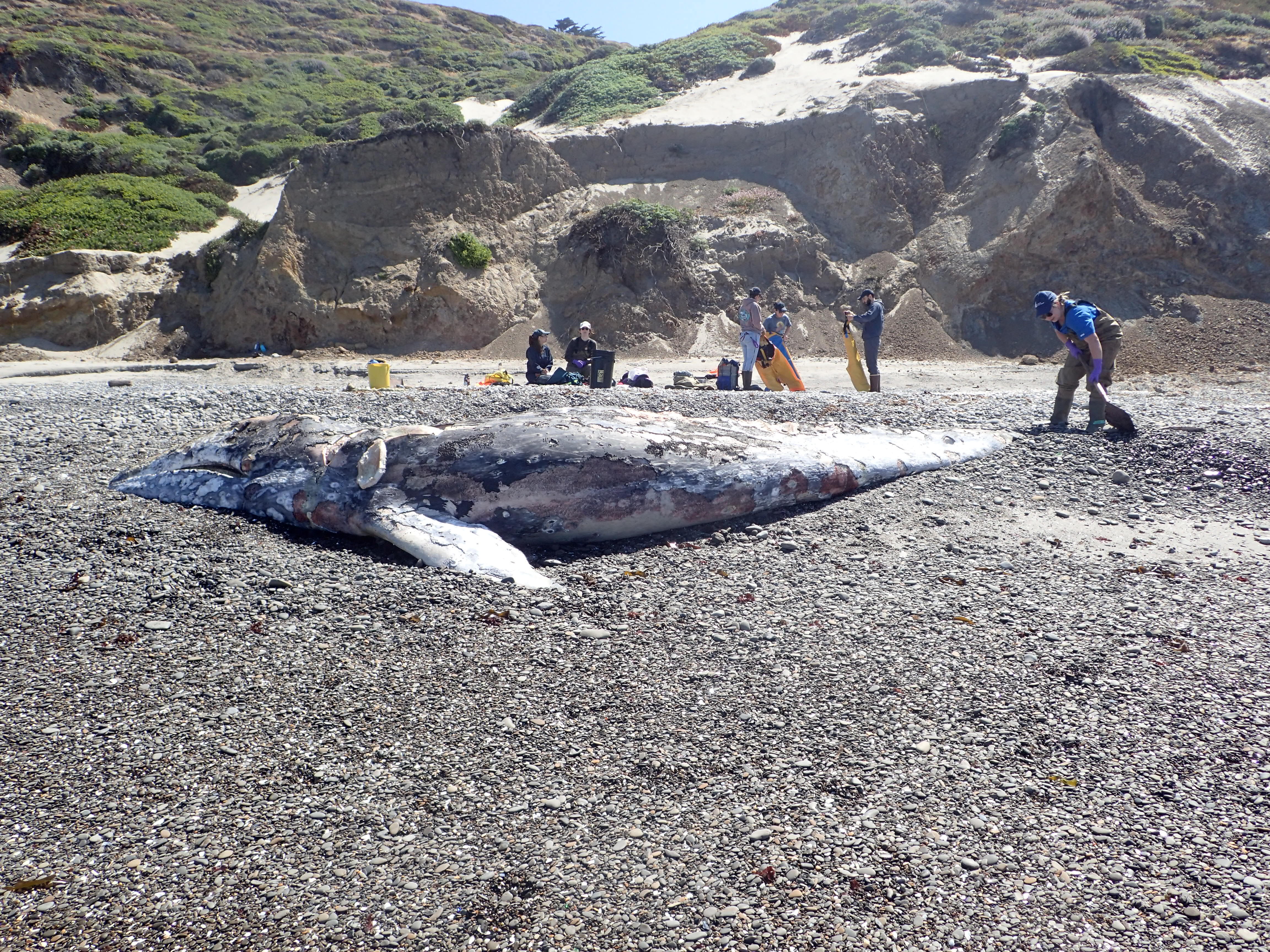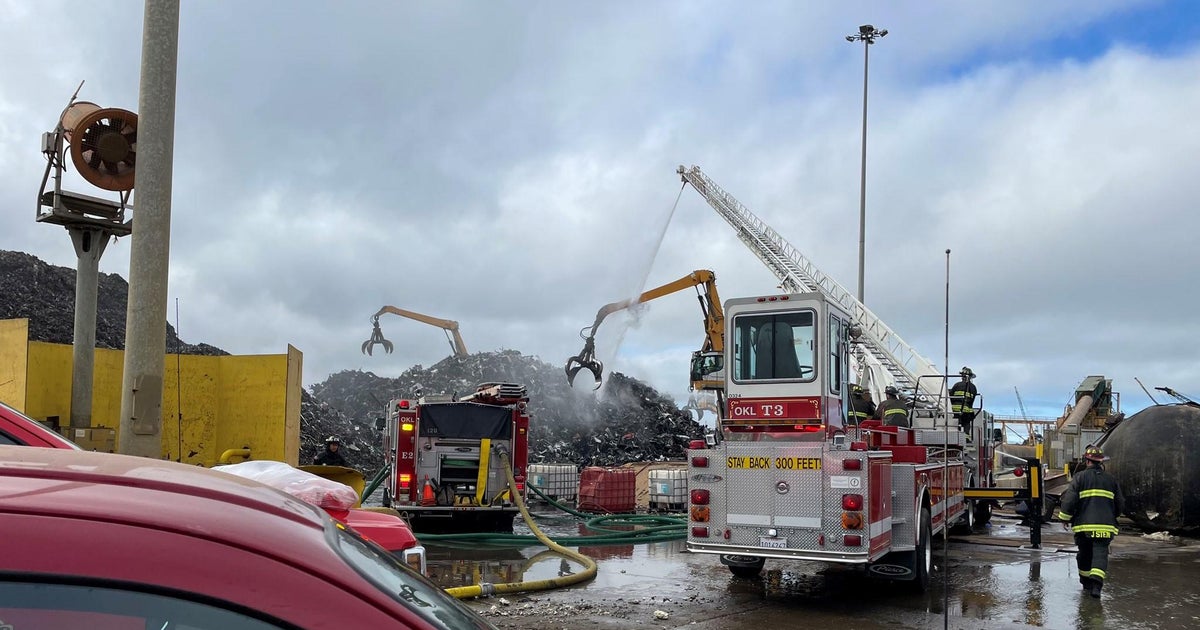Number of dead gray whales in San Francisco Bay highest since 2000, scientists say
Scientists said the number of gray whales found dead in San Francisco Bay has reached the highest in a quarter century, with the latest incident taking place earlier this month.
According to the Marine Mammal Center and the California Academy of Sciences, the center received reports of a whale underneath the Richmond Long Wharf, which is adjacent to the Richmond-San Rafael Bridge on the afternoon of July 7.
A responder confirmed the presence of the whale, which was determined to be a subadult female.
On July 10, the whale was towed to Angel Island State Park. The following day, a team of 10 scientists performed a necropsy on the whale.
"The main finding was hemorrhaging on the animal's left lateral side between the head and pectoral fin, concentrated near the skull, consistent with blunt force trauma due to a suspected vessel strike," the Marin Mammal Center said in a statement.
Scientists said the whale was 37-feet long, whose body was in "average" condition based on the fat stores and blubber layer.
"This latest gray whale caught everyone a bit by surprise given how late in the season it is and the fact that we had not sighted the species in the bay in nearly two weeks," said Kathi George, the center's Director of Cetacean Conservation Biology.
According to the center, the whale was the 21st dead gray whale found in Bay Area waters so far this year, the most since 2000. Of the 21 whales, five were found dead in just one week in May.
Scientists noted the number of gray whale sightings in the Bay Area reached an "unusually high number" in 2025, with more than 35 confirmed via photo identification. By comparison, only six gray whales were seen in the bay in all of 2024.
A recent population estimate by the found continued decline in eastern north Pacific gray whale numbers, with about 13,000 whales, the lowest since the 1970s.
George also urged boaters to be careful while navigating the bay.
"With the bay and our immediate coast serving as a shared space for commerce and increasing whale activity, including humpback whales, it's vital that all boaters, from large commercial vessels to sailboats, be whale aware. If you see a blow, go slow," George said.




